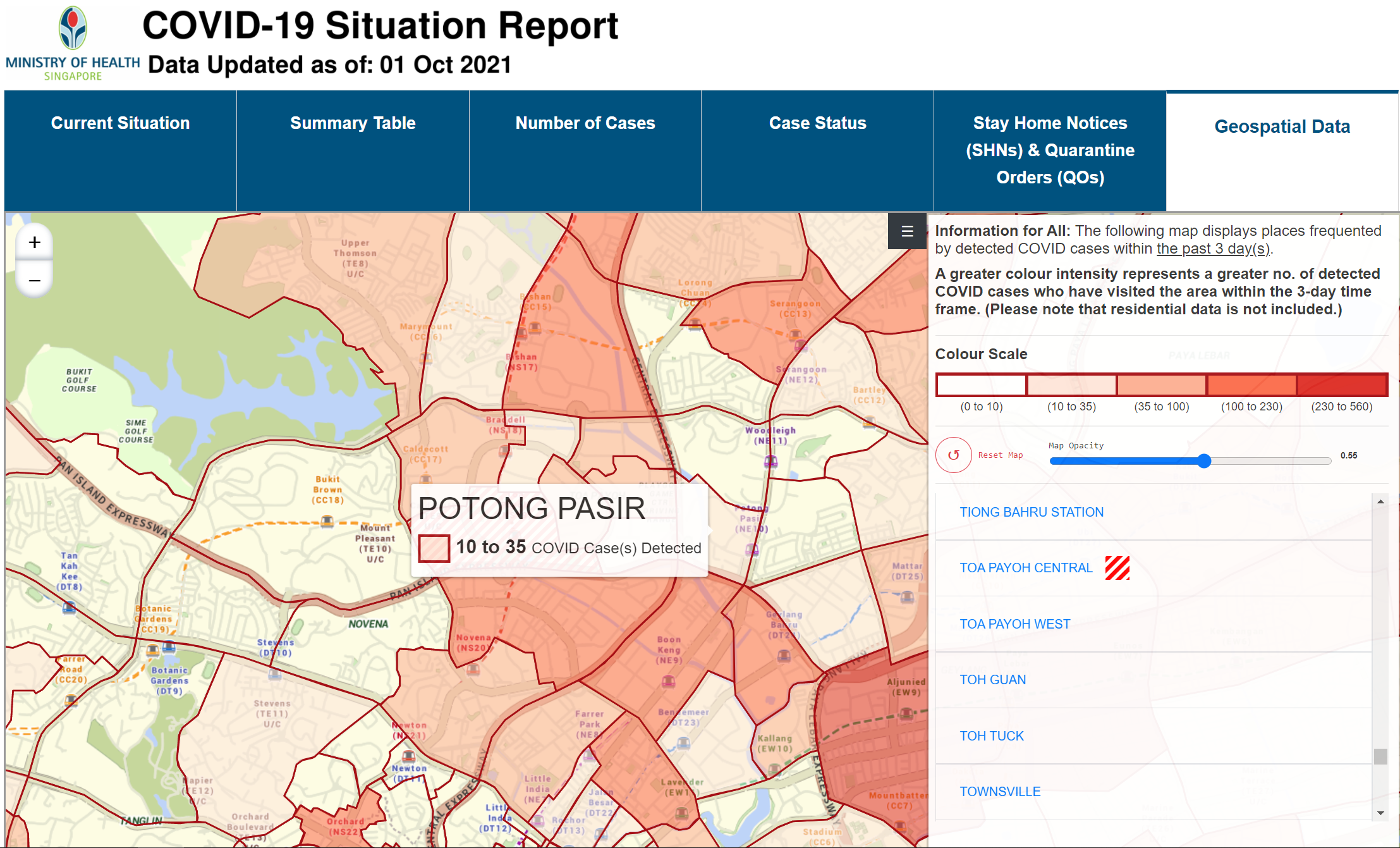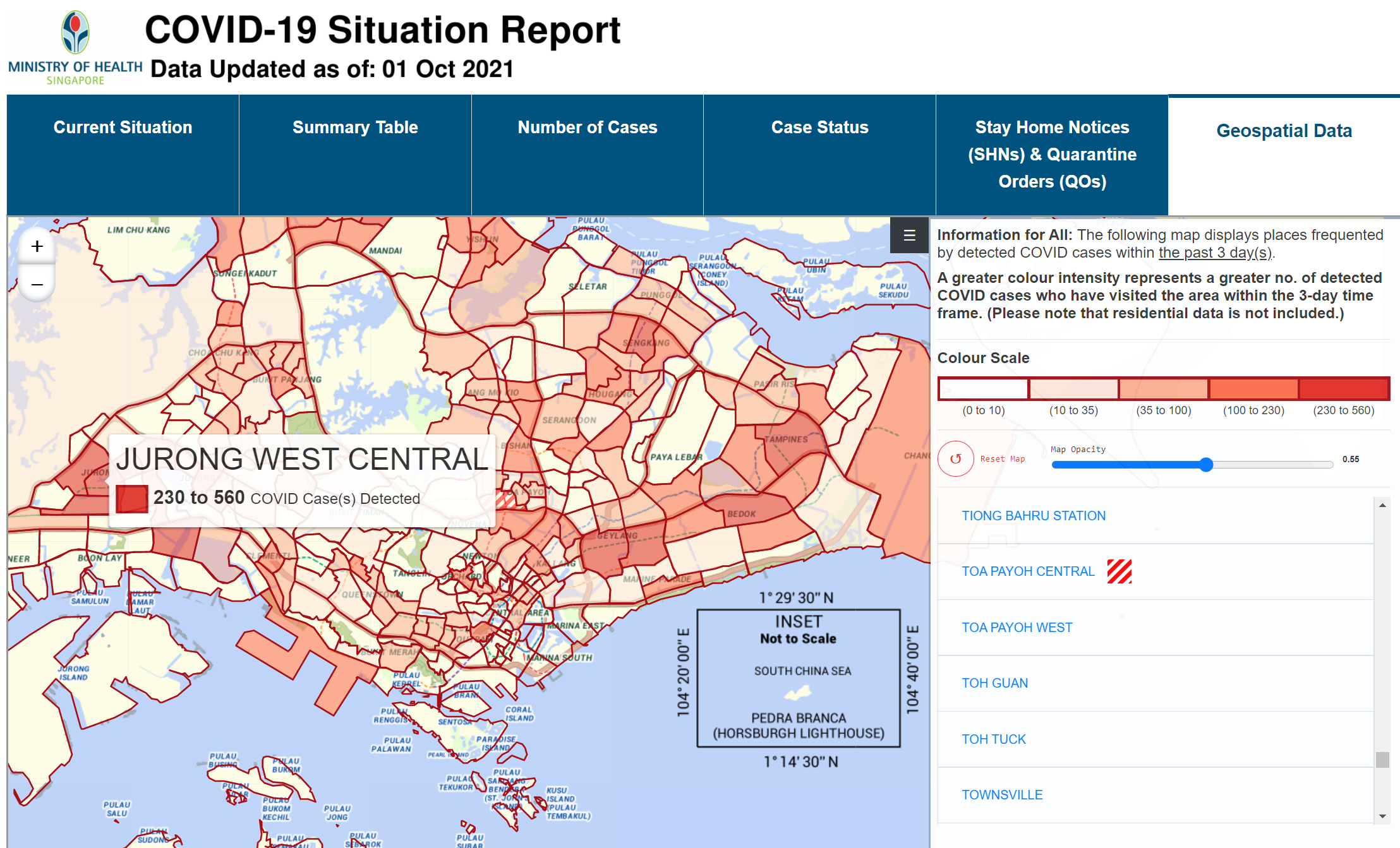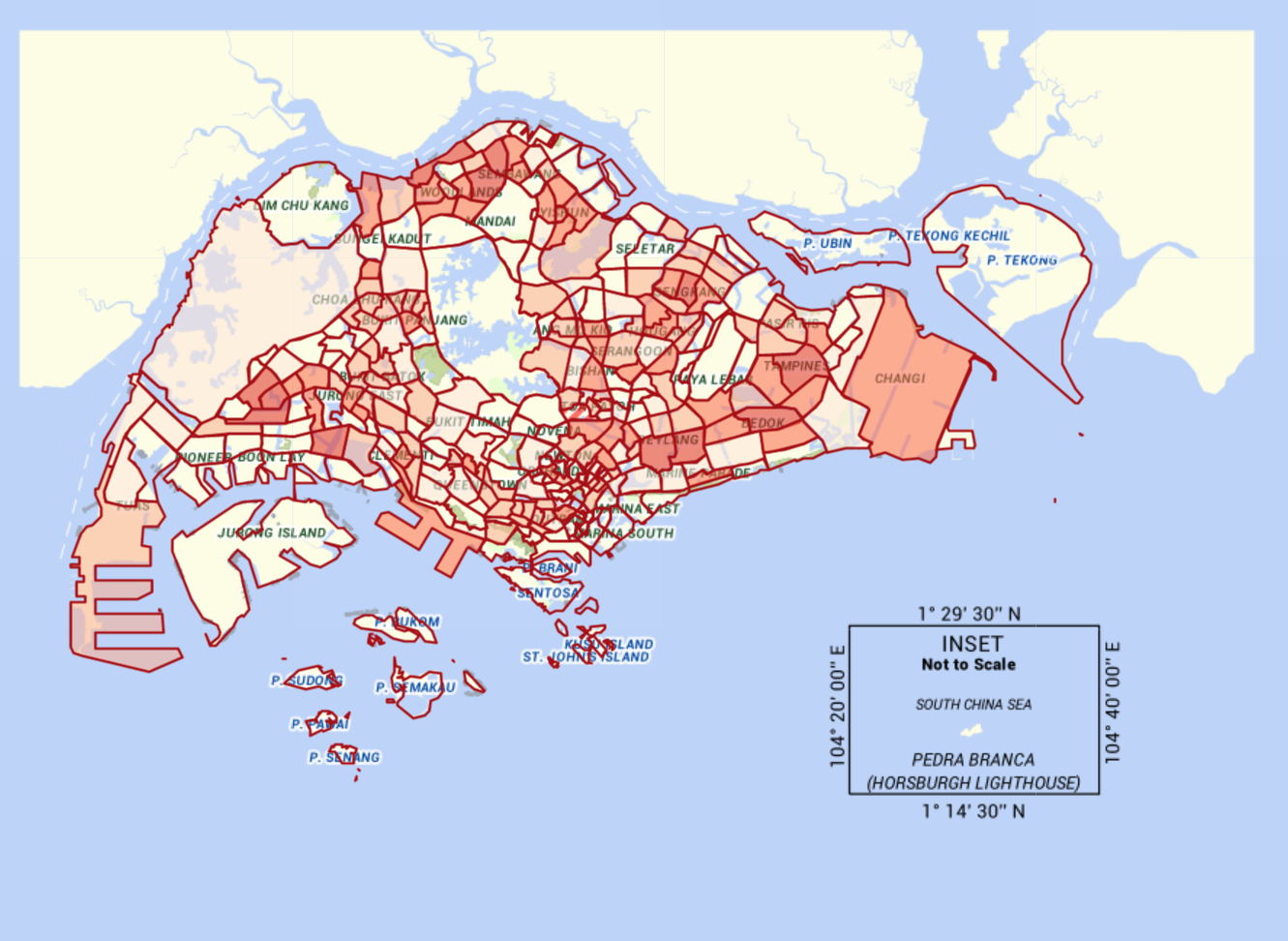Technology has been extremely useful during the COVID-19 pandemic.
Disseminating useful information on restrictions, and good hygiene practices has been made trivially easy with the help of social media and messaging apps.
The invention of mRNA technology has also allowed researchers to develop vaccines against COVID-19 less than a year after it emerged.
Now, thanks to a new interactive map online, residents here will know where exactly all the COVID-19 hotspots are in the country.
Everything About the COVID-19 Hotspot Map That You Need to Know
The Ministry of Health (MOH) has launched a new online map that allows users to see which areas have been frequently visited by COVID-19 cases.
The map, which breaks down the island into subzones, displays places visited by detected COVID-19 cases within the past three days.
The subzones are classed into five bands, each designated a colour based on how many COVID-19 cases have visited the area.
A light pink indicates that 10 to 35 detected cases have frequented the area, with some current examples being Marymount and Potong Pasir.

Meanwhile, a dark red is designated to subzones visited by 230 to 560 COVID-19 cases. Such areas include Aljunied, Tampines, Sengkang Town Centre, and Jurong West Central, to name a few.

The five bands on the colour scale are :
- White – 0 to 10 cases
- Light pink – 10 to 35 cases
- Salmon – 35 to 100 cases
- Pink – 100 to 230 cases
- Red – 230 to 560 cases
You can check the map here.
What to Do If You’ve Visited a COVID-19 Hotspot
So, you’ve discovered that you had recently visited a COVID-19 hotspot, based on information from the map. What next?
As MOH said last week, those who have visited a COVID-19 hotspot during the same time frame are encouraged to:
- monitor their health
- perform antigen rapid tests throughout the 10 days following the potential exposure
- minimise any unnecessary interaction with others
The ministry added that SafeEntry and TraceTogether data will continue to be used to inform individuals of possible exposures to confirmed cases.
Over 98% of Local Cases Over Last 4 Weeks Asymptomatic or Mild
It’s hard not to feel anxious after looking at the map, as the virus seems to have spread all over the country.

But the important thing to remember is that 98.2% of the local cases over the last four weeks were either asymptomatic or had mild symptoms.
Advertisements
As a result, many cases are able to recover on their own.
As the health ministry advised recently, those with mild acute respiratory infection symptoms should avoid seeking treatment at hospitals and instead go to Swab and Send Home clinics.
After all, the very reason the government reimposed COVID-19 restrictions was to give its healthcare system a breather.
Understand the difference between the COVID-19 tests here:
Advertisements
Read Also:
- ComfortDelgro Taxis Suspends Physical Credit Card Payments Due to Wirecard’s Closure in S’pore
- Soh Rui Yong Raised Nearly $42K in 48 Hours to Pay for Ashley Liew Defamation Suit Damages
Featured Image: MOH
Read Also:
- You Can Soon See “Northern Lights” in Gardens by the Bay & It’s Free
- Everything About the Eta Aquarids Meteor Shower That’ll Be in S’pore Sky in May
- S’porean Killed in Spain Had Bought Insurance Policy from Suspect
- Everything About the 15YO Who Lived in a Circuit Road Market Stall
- Walk-Ins for Some Traffic-Related Service in TP Be Discontinued & People Have Book Appointments Instead
- Certain Parts of Telok Blangah Hill Park to be Closed for 2 Years After Slope Failure
Advertisements

